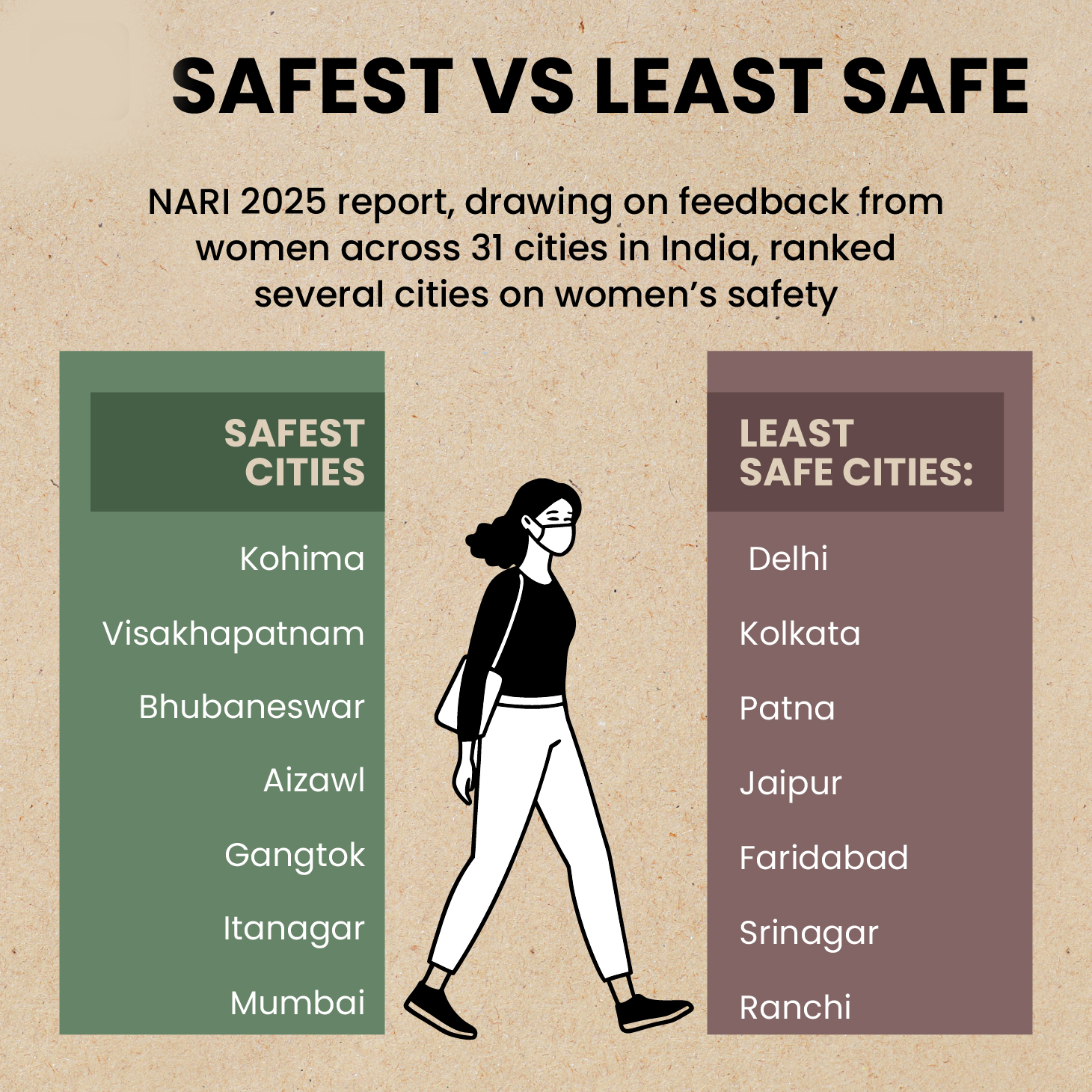Context:
The National Annual Report and Index on Women’s Safety (NARI) 2025was recently released by the National Commission for Women (NCW). Prepared by Pvalue Analytics and published by the Group of Intellectuals and Academicians (GIA), the report is based on the perceptions of 12,770 women across 31 cities, covering all states.
Key Highlights of the Report:
- Safest cities: Kohima, Visakhapatnam, Bhubaneswar, Aizawl, Gangtok, Itanagar, Mumbai
- Least safe cities: Patna, Jaipur, Faridabad, Delhi, Kolkata, Srinagar, Ranchi
- National safety score: 65 per cent
- Overall perceptions: 60% women felt safe, while 40% reported feeling “not-so-safe” or unsafe
- Harassment in 2024: 7% overall; 14% among women under 24
- Hotspots of harassment: Neighbourhoods (38%), public transport (29%)
- Trust in institutions: Only 25% confident in effective redressal
- Reporting rates: 1 in 3 women reported harassment; action taken in only 16% of registered cases
- Workplace safety: 91% considered offices safe, but nearly half were unaware of POSH mechanisms
Other highlights of the Report:
- Time-based variations: Women reported high levels of safety in educational institutions (86%) and workplaces (91%) during the day, but confidence collapsed after dark due to poor street lighting and unreliable transport.
- Workplace paradox: While offices were broadly considered safe, awareness about the Prevention of Sexual Harassment (POSH) Act was weak. Nearly half of respondents were unaware of its existence, suggesting a gap between legislation and awareness.
- Age-linked vulnerability: Younger women (under 24) faced harassment at twice the national average, showing disproportionate risks in campuses, hostels, and recreational spaces.
- Spatial hotspots: Neighbourhoods (38%) emerged as the most unsafe zones, followed by public transport (29%). This underlines the importance of urban planning, street design, and surveillance.
- Cycle of silence: Two-thirds of harassment cases were never reported. Even when complaints were filed, formal registration happened in only 22% of cases, and action was taken in just 16%. This entrenches mistrust in the system.
Institutional and Structural Dimensions:
The report stresses that safety is not just a law-and-order concern but a developmental issue shaping education, employment, mobility, and digital participation. Safer cities were linked with:
- Effective policing,
- Gender-sensitive urban infrastructure,
- Higher civic participation, and
- Greater institutional responsiveness.
By contrast, weaker scores were tied to:
- Patriarchal norms,
- Poor planning of urban spaces, and
- Lack of faith in grievance redressal mechanisms.
Conclusion
Women’s safety is critical to achieving Sustainable Development Goal (SDG) 5: Gender Equality. Insecure environments restrict mobility, economic participation, and access to opportunities. The report highlights the need to integrate perception-based surveys with NCRB data, ensuring that policymaking reflects both lived experiences and official crime statistics.







